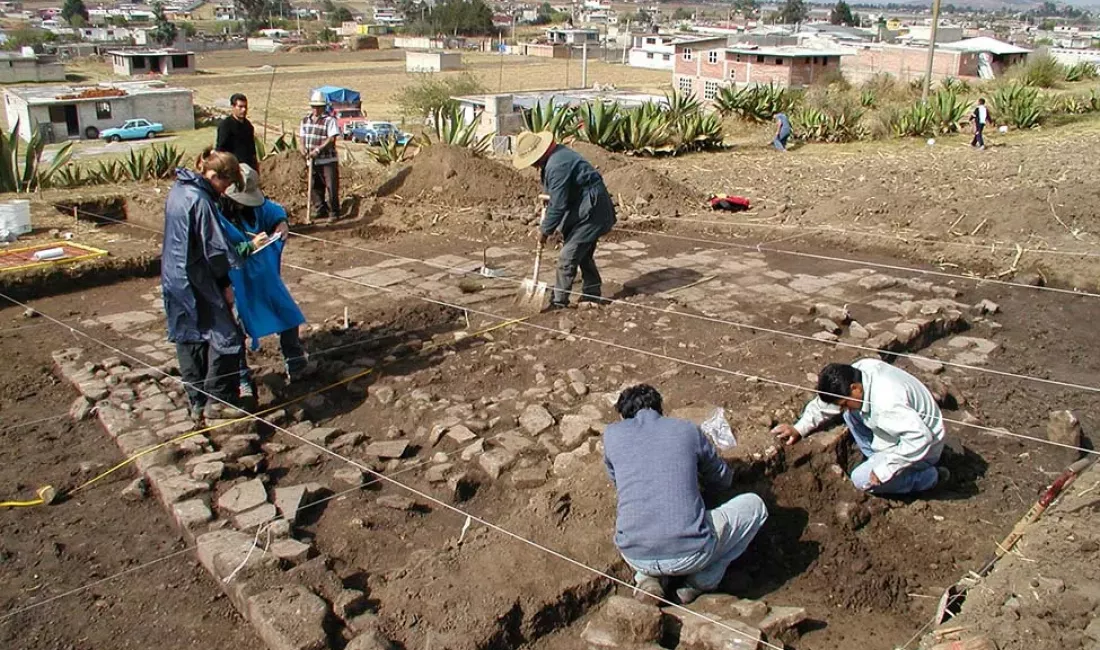Ancient Examples Show It’s Possible to Transplant Metropolises—But Costs Are Steep
This piece was originally published by Zócalo Public Square.
When my crew and I started excavating Calixtlahuaca—an Aztec city-state capital near the modern-day city of Toluca in central Mexico—I knew our findings might help answer questions of the past.
I didn’t expect to encounter clues that could help answer one of the most daunting questions of the future: Can our climate-threatened cities be moved?
The Spanish took over Calixtlahuaca in 1521. But as we dug, we were surprised to find no Spanish buildings and almost no artifacts. During earlier excavations at Aztec sites, I unearthed remnants of churches and convents and colonial objects like iron nails and cow bones—evidence of how settlers had converted Aztec cities into Spanish ones.
So I was puzzled by the lack of Spanish remains at Calixtlahuaca—until a historian pointed me to archival documents from the 16th century. Rather than move into Calixtlahuaca, these documents suggested, Spanish authorities decided to move Calixtlahuaca, forcibly relocating its population to build a new city across the mountains.
It turns out that moving towns was not uncommon in colonial Latin America. Geographer Alain Musset found that authorities moved at least 161 Spanish towns to new locations, some multiple times, and several across rivers to more convenient sites where they remain today.
Past instances of urban movement happened largely for political or economic reasons. But they hold increasingly important lessons for modern cities responding to the environmental pressures of climate change. Precariously positioned coastal cities like Miami can adapt to rising sea levels in three ways: resist the sea by building dikes and seawalls, accommodate floods by modifying buildings and spaces, or retreat by moving to a new location. Retreat is typically seen as the choice of last resort. Scholars use the term “managed retreat” to describe how present-day communities might move to new locations in orderly and planned fashions.
Historical relocations show us that political authorities in the past could move cities when they needed to—but the costs for residents were extremely high.
One study of 50 towns and villages posits that managed retreat was common in U.S. history, but that the median pre-move population of uprooted communities was only 500. Managed retreat can be a bureaucratic nightmare, even for a small city. The 1990s relocation of Valmeyer, Illinois (population 900) from a flood-prone riverside location required permits or funding from no fewer than 26 federal, state, and local agencies.
To study the displacement of larger communities, we must peer further back, to Classical Greece, one of the few settings where scholars have systematically examined the movement of cities. In her book Urban Relocation in Archaic and Classical Greece: Flight and Consolidation, historian Nancy Demand finds numerous cases where entire city-states—a capital city along with hinterland villages—were deliberately moved from one place to another. Relocation sometimes followed a military defeat, often to move the vanquished community closer to allied settlements. A number of coastal towns retreated inland when threatened by the expanding Athenian empire’s navy; several joined forces and settled together in what would become the city of Olynthus. The Greeks even coined a term for the movement of cities from the coast to the highlands: anoikism. In only a few cases was there an economic motive for the transition, such as a harbor silting up.
In a few early urban traditions—particularly in India and Africa—entire cities and neighborhoods were mobile. Vast fields of tents followed kings (including Charlemagne in early medieval Europe) as they traveled around their realm. In the more recent past, officials moved many U.S. state capitals to new locations, some multiple times. Geographer Sergei Tarhov identified 115 capital cities around the world that were moved since 1700 CE—including the national capitals of Brazil (Brasilia), Nigeria (Abuja), and Kazakhstan (Astana). Observers are waiting to see whether moving the capital of Indonesia from Jakarta to Nusantara will work out as planned.
As my team and I excavated what was once Calixtlahuaca, we wondered why the Spaniards had uprooted it. In ancient times, it had been the capital of a small empire, with large stone temples and a royal palace. The Aztecs conquered Calixtlahuaca in the 1470s, but the city continued to flourish. If the Spanish had decided other Aztec cities were good enough to convert to their own, why not Calixtlahuaca?
It turns out the Spanish crown had policies for establishing new cities, and they favored settings on level ground, close to major roads. Calixtlahuaca sat on a mountain, away from the new colonial road network. “The friars of the monastery of San Francisco in the city of Toluca forced the Indians who were in Calixtlahuaca to move to the city of Toluca,” notes an archival document from 1589. The immediate reason was to secure a labor force to construct a permanent church and monastery. Unfortunately, the document is silent about the details of the move. How many people made the journey? Did they bring their furniture or possessions with them? Did they see it as a burden or an opportunity? We don’t know.
Calixtlahuaca and other historical cases show that leaders moved cities in early times when it was necessary to accomplish the goals of a regime—often by force, and under brutal circumstances for residents. Like the known relocations in the U.S., however, these long-ago moves involved cities much smaller than their modern counterparts, with far simpler political and administrative contexts. No Greek city-state had to get 26 different agencies to sign off before packing its bags.
It is difficult to know whether managed retreat is even feasible for modern cities—or desirable for their residents. Still, while the scale and political details differ radically, the basic patterns of archaeology and history are clear. Today, when urban planners ask me about historical examples of managed retreat, I tell them this: When a city needed to be moved—for environmental, military, or administrative reasons—the political authorities found a way to do it.



